ISSN ONLINE(2319-8753)PRINT(2347-6710)
ISSN ONLINE(2319-8753)PRINT(2347-6710)
Koteswararao.B1, Ravi. D2, P. Satish3
|
| Related article at Pubmed, Scholar Google |
Visit for more related articles at International Journal of Innovative Research in Science, Engineering and Technology
DTH is short for "down-the-hole". The down-the-hole drilling is used to produce large-diameter holes or bores in to the hard rock surfaces of earth crust. Generally the life of bit is 200 Metres because of insufficient of cooling or rough handling the life of button bit reduces. To avoid the cracks, wear and tear on the button bit there is a necessity to change material and design. The bottom surface of the button bit subjected to high thermal stress. Due to high temperature and impact force there is a chance of deflection of the head. In my paper we are going to design a new model to improve the heat transfer rate as well as high strength material. The results taken based on ANSYS software .Because while manual testing in the lab we got 98% nearer values to software value.
Keywords |
| ANSYS1, Button bit2, DTH3, Handling4 , impact force5, strength6, Thermal stress7 |
INTRODUCTION |
| In DTH drilling, the percussion mechanism commonly called the hammer is located directly behind the drill bit. The drill pipes transmit the necessary feed force and rotation to hammer and bit plus compressed air for the hammer and flushing of cuttings. The drill pipes are added to the drill string successively behind the hammer as the hole gets deeper. The piston strikes the impact surface of the bit directly, while the hammer casing gives straight and stable guidance of the drill bit. This means that the impact energy does not have to pass through any joints at all. The impact energy. |
| Different types of bits depending on the type of soil and the working conditions. The different types of bits are concave, convex and flat. The holes can be drilled ranging from 4 1/2 inch to 32 inch. The way to choose suitable drilling equipment is complicated and a lot of information is required to reach performance and economy in the operation. Aspects that have to be taken into consideration are the purpose of the borehole, geology, hydrogeology pump, method of drilling, flushing media and so on. |
II. DTH BUTTON BIT |
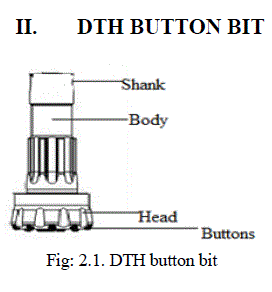 |
| This is to be made of strong metal for making a hole into earth It receives blows from piston so it should be ready to absorb shock loads. And generally any bit should be wear resistant. Any low carbon steel is ready to absorb the shock loads and it is wear resistant. Coming to the case of high carbon steel it is strong but cannot receive shock loads and it is not wear resistant. So our low carbon steel is carburized in order to get all the qualities we require. They are all hot pressed and excellent heat treatment, which guarantee our quality are always consistent and reliable. Bits can come in different types: Flat-faced, Convex, Concave, drop enter, ballistic bits and dome bits. |
III. MATERIAL USED FOR BUTTON BIT |
| EN-36-C is the material used for making button bit. EN-36-C material is an alloy steel. It possesses all the required qualities whatever properties required for the making of button bit and hammer. The higher chromium content of EN36C allows a much higher core strength of approximately 37~39HRC compared to a maximum of 33~35HRC for EN36A after tempering. |
IV. THERMAL ANALYSIS OF DTH BIT |
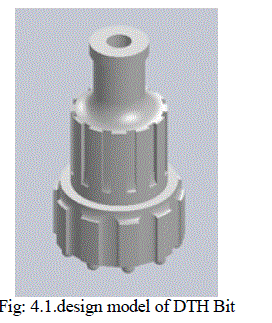 |
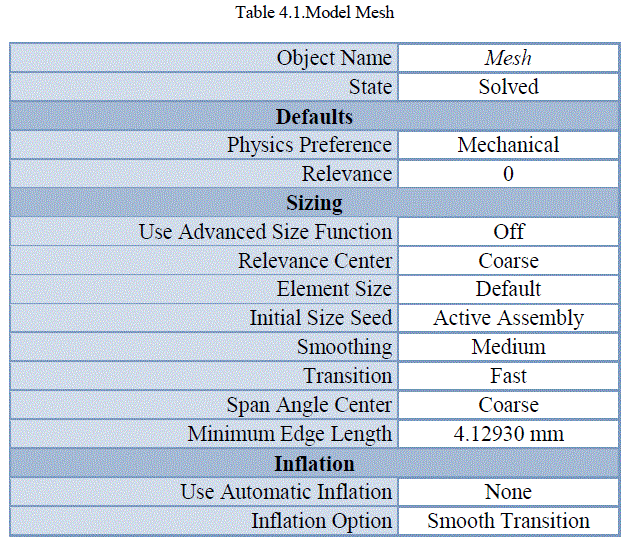 |
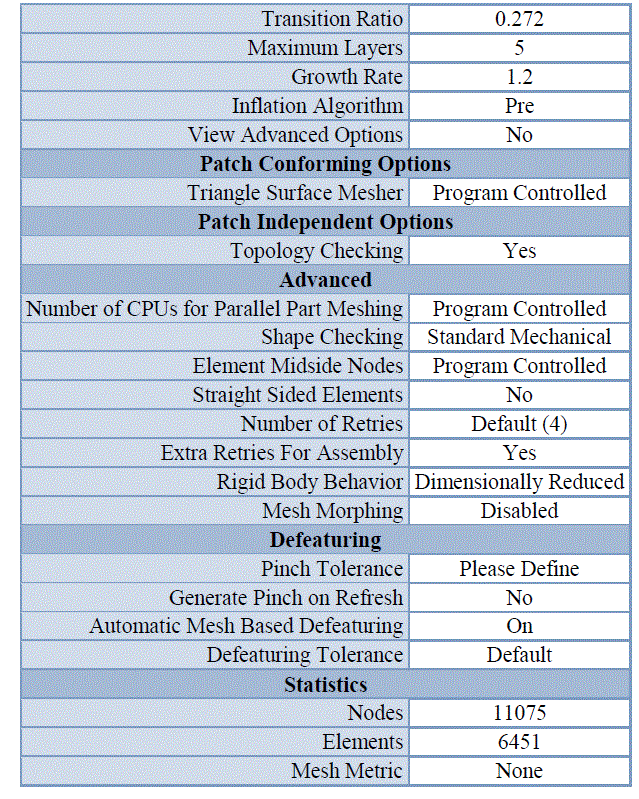 |
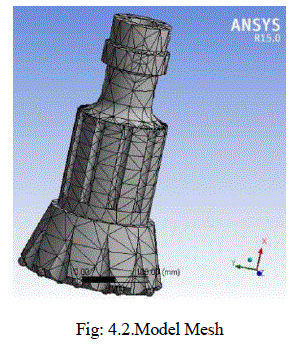 |
| 4.1. Steady-State Thermal |
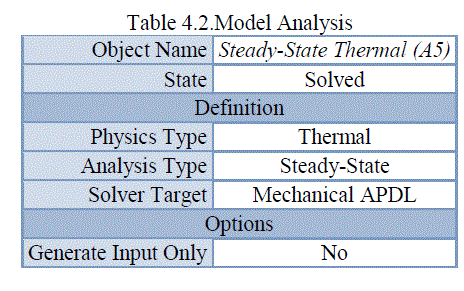 |
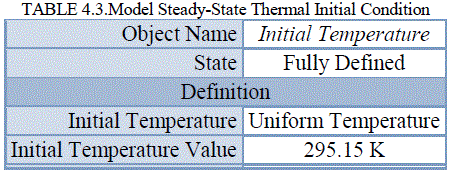 |
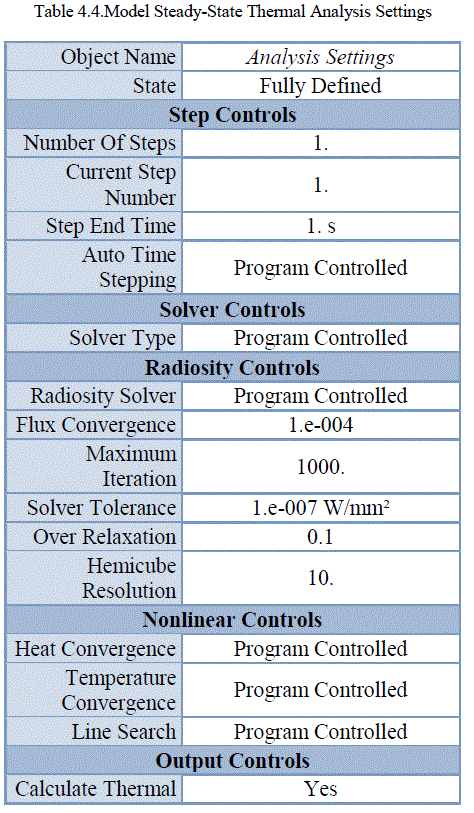 |
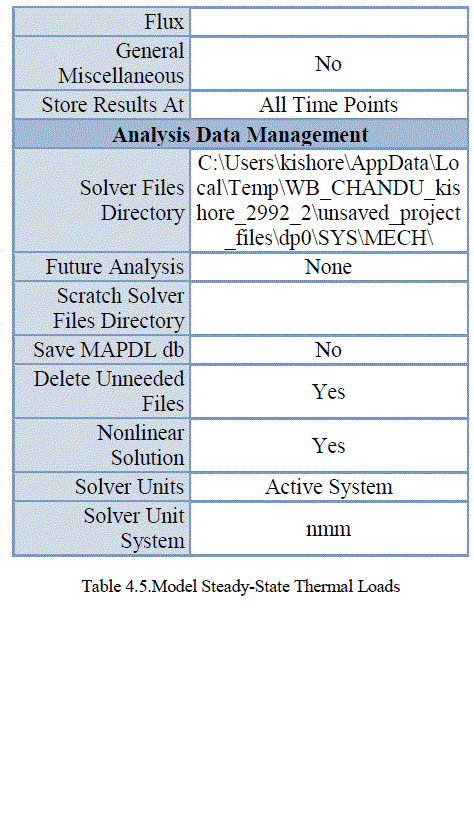 |
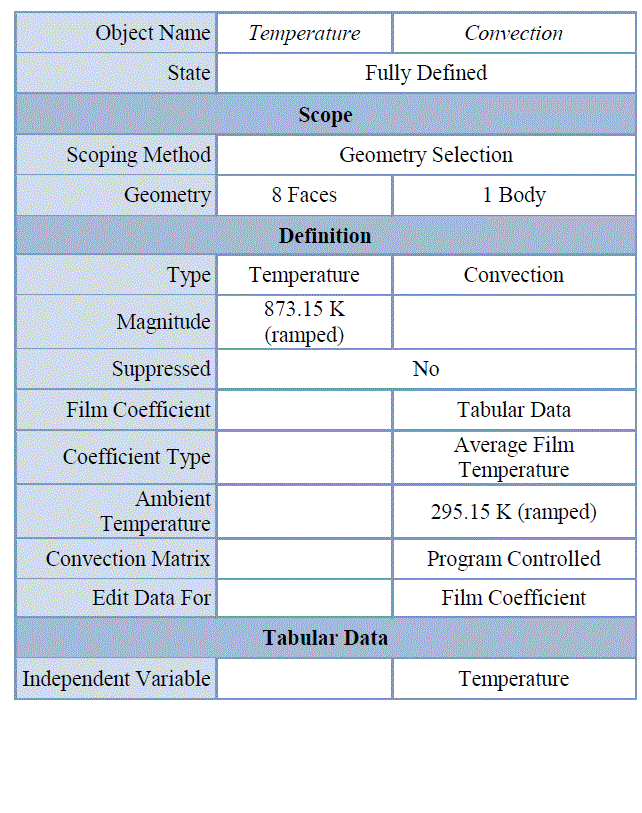 |
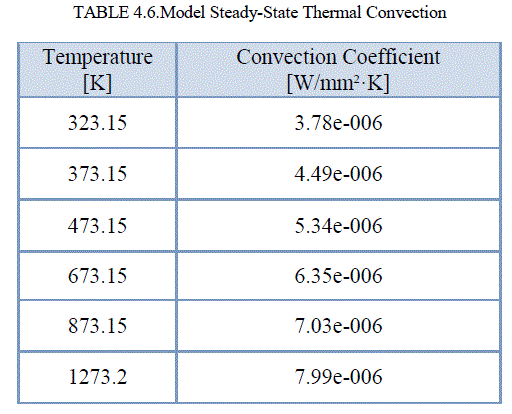 |
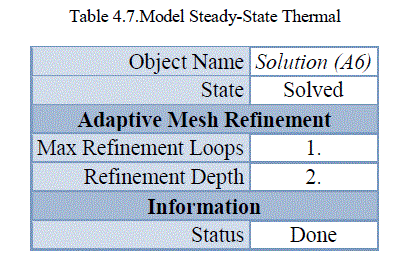 |
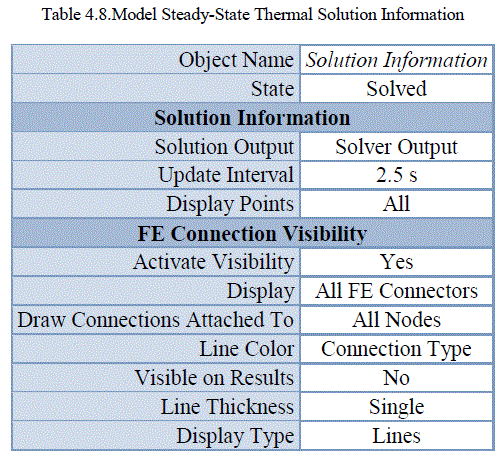 |
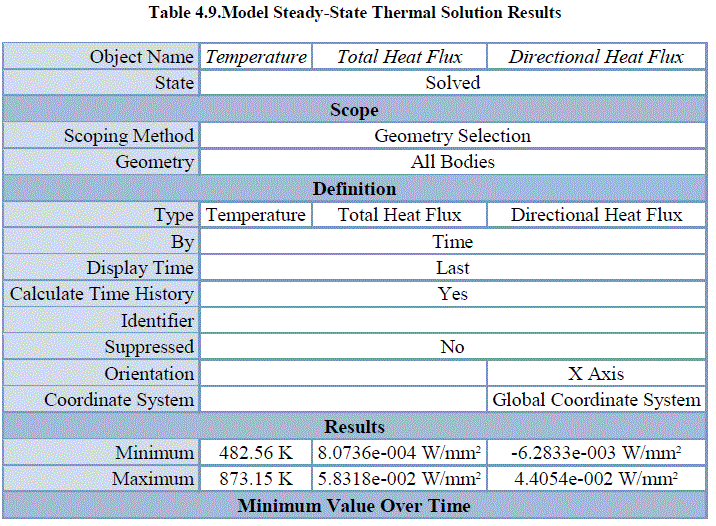 |
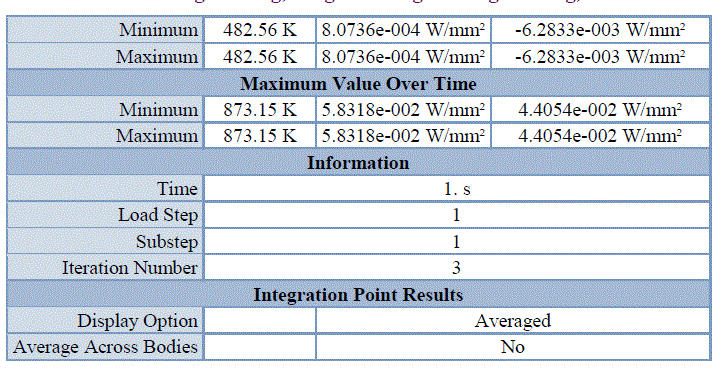 |
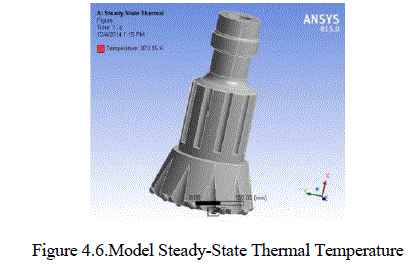 |
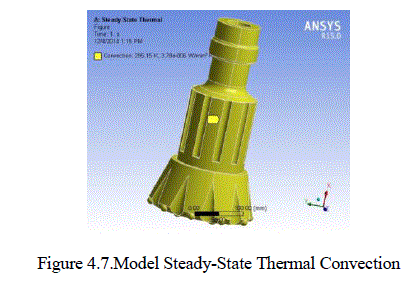 |
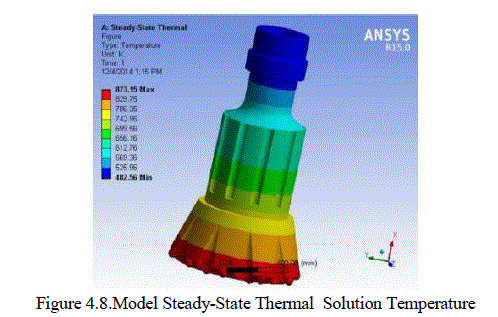 |
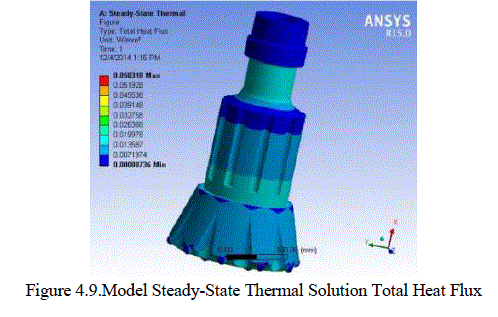 |
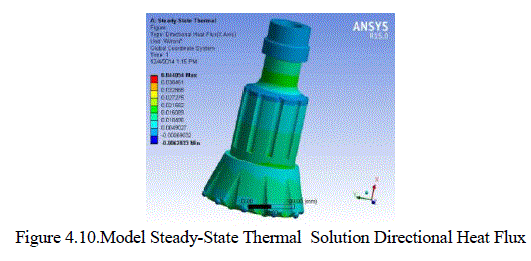 |
| 4.3. Material Data |
| Table 4.10 Tungsten alloy |
| Thermal Conductivity 1.12e-002 W mm^-1 C^-1 |
V. CONCLUSION |
| Based on the analysis software the results are obtained. These results are taken based on the stress, strain and deflection values of button bit. In the modified design we made a groove to increase heat transfer rate. Based on results modified design can increase the heat transfer rate. Because of sufficient cooling the material can with stand high thermal stress. So the modified model will give the more life as well as it also reduces the wear and tear. We increased the strength of material by using tungsten alloy materials. |
VI. ACKNOWLEDGEMENT |
| This paper is based on research carried out by Koteswararao.B, D.Ravi and Ashok Patil, Hyderabad in academic level. I am very much grateful to Mr.K.SATISH, Associate professor, SMGOIH for his necessary Technical support and stimulated guidance throughout the course of the project work. I take this opportunity to record our obligations to my parents for their encouragement, Blessings and in valuable guidance for the development of this paper. |
References |
|